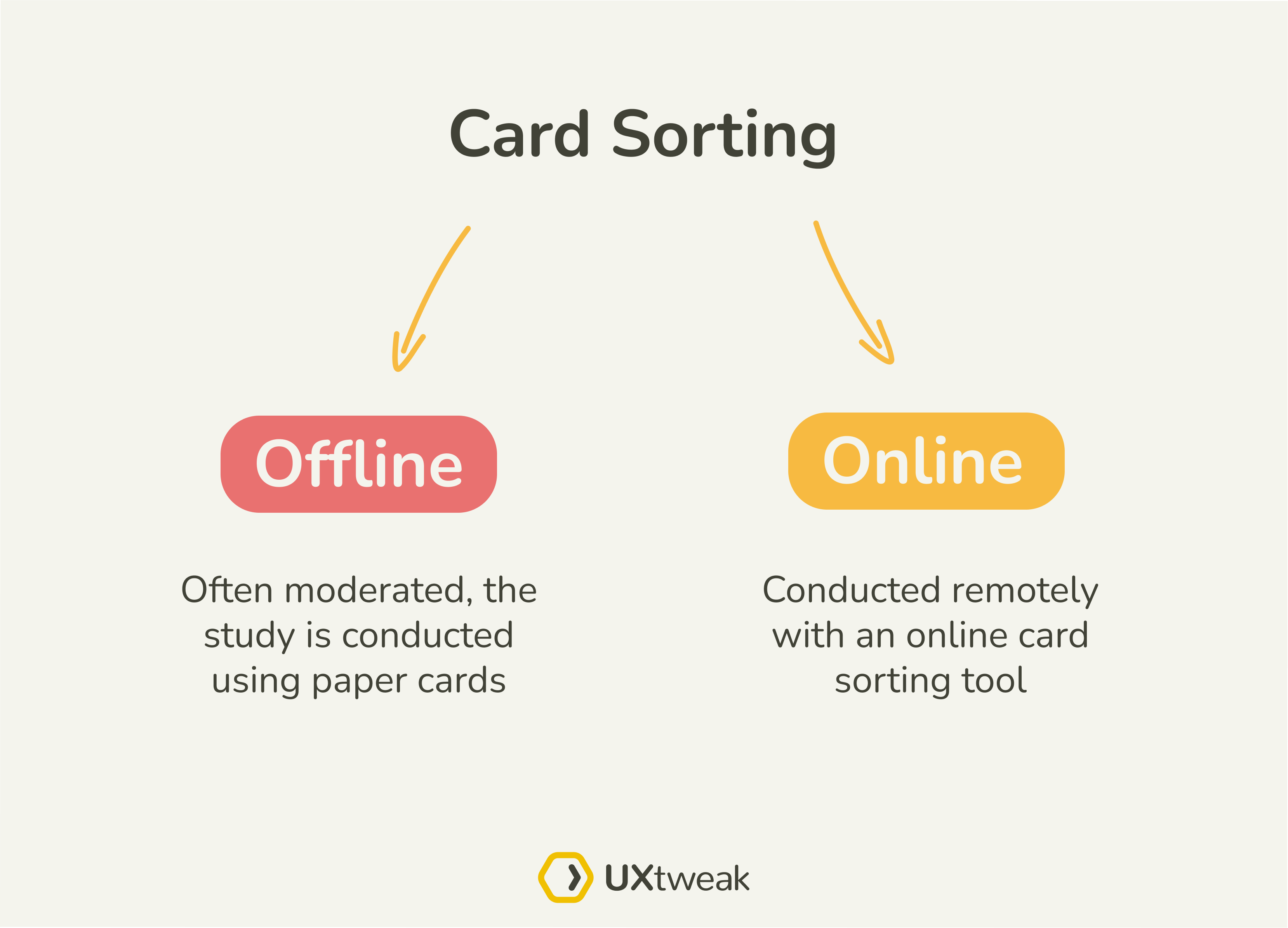Card sorting is a proven and valuable method of collecting insights into your users’ way of thinking and for optimizing the Information Architecture (IA) in your digital products. Apart from all the different types of card sorting there are also 2 different methods of how you can approach what environment you want to conduct your study in.
Both online and offline card sorting have their benefits as well as downsides. Let’s take a closer look at each of them and make sure that you choose the right one to fit your needs.

Offline card sorting
Offline card sorting is most often also moderated. This means that it involves the interaction between a participant and a researcher, who is also present to guide the participant through the exercise. This used to be the first way how card sorting was historically conducted. Paper cards are traditionally used, hence the origin of the technique’s name.
Offline card sorting gives you the opportunity to see the user sorting cards in real life. It’s a great way to listen to what your respondents have to say about the study as they move the cards around.
This method allows you to sit down with your respondents, give them instructions, and see how they handle the card sorting problem. As a researcher, you can also ask questions during the study to get more details on the respondent’s actions. You can hear them thinking out loud, observe their body language, and can respond to any confusion.
Recently, there’s also been the option to use an online card sorting tool to collect data from in-person card sorting sessions, to combine some of the benefits of both approaches.
Pros of offline card sorting:
- Watching real-life interactions in real time
- Asking questions during the study
- Participants’ facial expressions and body movements
Cons of offline card sorting
While offline card sorting definitely has its advantages, there are a couple of cons that you should be aware of. Due to the fact that the study is conducted offline, it can be rather expensive and time-consuming to organize such an event. Here are some of the biggest disadvantages of offline card sorting:
- Time-consuming to plan, conduct and process
- Difficult to analyze
- Number of respondents is most likely limited due to location and budget constraints
Online card sorting
Online card sorting is a type of study conducted remotely, usually with the help of a specialized card sorting tool such as UXtweak’s. It can be done at any place and at any time. You just need to send a link to the study to your respondents. This method is fast, cost-effective and easy for both the respondent and the researcher. Typically, these online sessions are unmoderated, meaning you need to be extra careful about providing clear and thorough instructions.
To get a better idea of how online card sorting is conducted, check out the video below. It will help you set up and run online card sorting studies with UXtweak. ⬇️
There’s no need to travel anywhere as there’s no physical lab or site where the study is taking place. Thanks to this, online card sorting allows you to test as many respondents as you want, achieving results with statistical significance much more easily.
Online card sorting tools provide you with deep analytics, easy-to-read graphs and data charts, as well as easily shareable reports from your studies. You can get insights in a matter of minutes.
Pros of online card sorting
- Fast
- Cheap (even free in some cases)
- Provides you with deep analytics
- Many recruitment opportunities and an unlimited number of participants
- Can be conducted anywhere, at any time
Cons of online card sorting
- You can’t see users’ real-time interaction with the cards
- No ability to ask questions during the study
Online vs. Offline card sorting
So which one should you choose?
While both of these methods have their pros and cons, online card sorting is a better option in most cases. Even though it does not provide you with information about real-time user interactions, there are many important benefits that come with it.
An online card sorting tool is something that streamlines your research process and allows you to focus on making improvements, while doing all the analysis for you. It will save you time, nerves, and resources as well as give you the ability to dive deeper into user perceptions and expectations.


